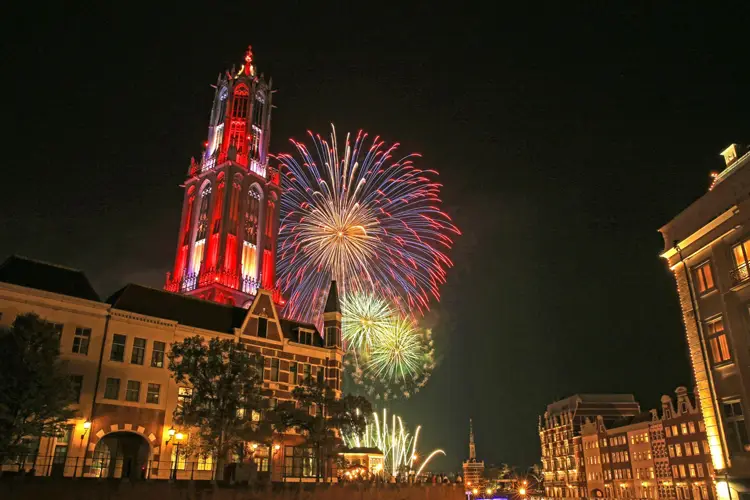- Home
- Japan Private Tours
- Kyushu Private Tours
Discover Kyushu: Top Things to Do and Travel Itinerary for Japan’s Southern Jewel
Looking to escape the crowds of Tokyo and Kyoto? Head south to Kyushu—Japan’s underrated gem known for its lush mountains, relaxing hot springs, vibrant cities, and rich cultural heritage. Whether you're into food, nature, history, or adventure, Kyushu has something for every type of traveler.
In this ultimate Kyushu travel guide, we’ll introduce the top things to do in Kyushu, highlight some off-the-beaten-path experiences, and provide a flexible Kyushu itinerary you can adapt for a 3-day, 5-day, or 7-day trip. Get ready to explore one of Japan’s most diverse and rewarding regions.
Why Visit Kyushu?

Welcome to Kyushu, Japan's captivating southern island, a land of fiery volcanoes, rejuvenating hot springs, ancient historical ties to Asia, and a vibrant, warm local culture. Imagine soaking in a therapeutic onsen amidst picturesque mountains, witnessing the grandeur of one of Japan's most impressive castles, exploring a city with a unique international past, and savoring some of the nation's most celebrated regional cuisines. This isn't just a trip; it's an exhilarating journey through diverse landscapes, profound history, and unforgettable sensory experiences that will leave you refreshed and inspired.
- Onsen Paradise: Home to Japan's most abundant and diverse hot springs, offering ultimate relaxation and unique natural wonders.
- Dynamic Nature: Explore active volcanoes, dramatic coastlines, ancient forests, and lush national parks.
- Rich History & Culture: Discover unique historical narratives influenced by international trade and explore charming local traditions.
- Culinary Excellence: Indulge in world-renowned regional delicacies, from rich ramen to exquisite wagyu beef and fresh seafood.
Quick Guide to Kyushu
Ready to plan your unforgettable Kyushu adventure? Here’s what you need to know to get started.
Location & Access
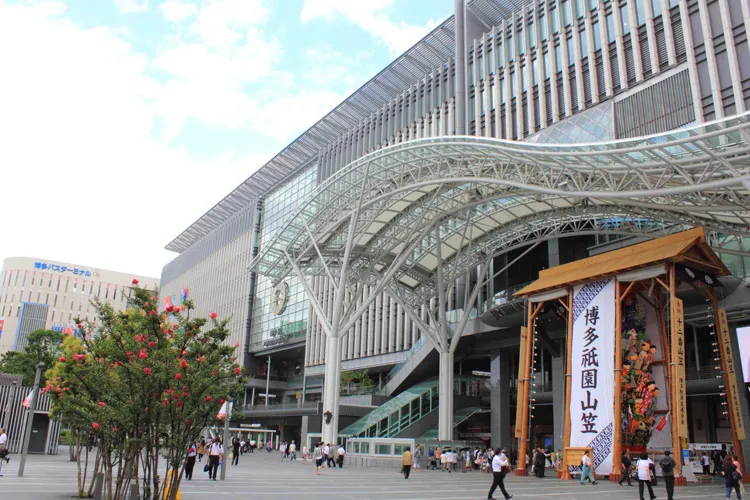
Kyushu is Japan's third-largest island, located southwest of Honshu. It's connected by bullet train and is a major hub for international flights from East Asia.
- From Tokyo/Osaka to Fukuoka (Hakata):
- By JR Sanyo/Kyushu Shinkansen: The fastest and most convenient option. Direct from Tokyo Station (approx. 5-6 hours) or Shin-Osaka Station (approx. 2.5 hours) to Hakata Station (Fukuoka). (Covered by Japan Rail Pass)
- International Access:
- Fukuoka Airport (FUK): A major international airport with numerous direct flights from East Asian cities (Seoul, Busan, Shanghai, Hong Kong, Taipei) and some Southeast Asian cities. Excellent access to Hakata Station (subway, approx. 5-10 minutes).
- Other Airports: Kagoshima (KOJ), Kumamoto (KMJ), Miyazaki (KMI), Oita (OIT), Nagasaki (NGS) also have domestic and some international connections.nghai, Hong Kong, Taipei) and some Southeast Asian cities. Excellent access to Hakata Station (subway, approx. 5-10 minutes).
- Within Kyushu:
- JR Kyushu Railways: Extensive network connecting major cities and tourist spots, including scenic "D&S" (Design & Story) trains. The JR Kyushu Rail Pass (Northern Kyushu, Southern Kyushu, or All Kyushu) is highly recommended for foreign visitors.
- Highway Buses: An economical way to travel between cities, particularly useful for reaching some onsen towns not directly on train lines.
- Rental Car: Highly recommended for exploring rural areas, national parks, and some onsen towns at your own pace.
Climate & Seasons

Kyushu experiences four distinct and beautiful seasons, each offering a different charm and transforming the island's scenery. The climate is generally milder than Honshu, especially in winter.
- Spring (March - May): Mild and pleasant (average 10-20°C/50-68°F), with cherry blossoms typically blooming from late March to early April across the island, especially beautiful at castles and parks. Ideal for comfortable sightseeing. A light jacket is recommended.
- Summer (June - August): Warm and humid (average 25-30°C/77-86°F). Ideal for coastal activities, outdoor adventures, and enjoying regional festivals. Light clothing and sun protection are essential.
- Autumn (September - November): Crisp and comfortable (average 15-25°C/59-77°F), celebrated for its breathtaking autumn foliage in mountains and valleys, typically from late October to mid-November. This is a very popular season. Layers are essential.
- Winter (December - February): Generally cool (average 5-10°C/41-50°F). Less snow than Honshu (except in mountains like Aso). Perfect for enjoying onsen. A warm coat and sweaters are necessary.
When is the best time to visit? Spring (for cherry blossoms) and Autumn (for vibrant foliage and comfortable weather) are often considered the most picturesque and pleasant. Winter is ideal for an onsen-focused trip, while Summer is great for outdoor and marine activities.
Explore Kyushu's Iconic Prefectures & Sites
Kyushu's seven prefectures each offer unique attractions, from bustling cities to serene natural escapes.
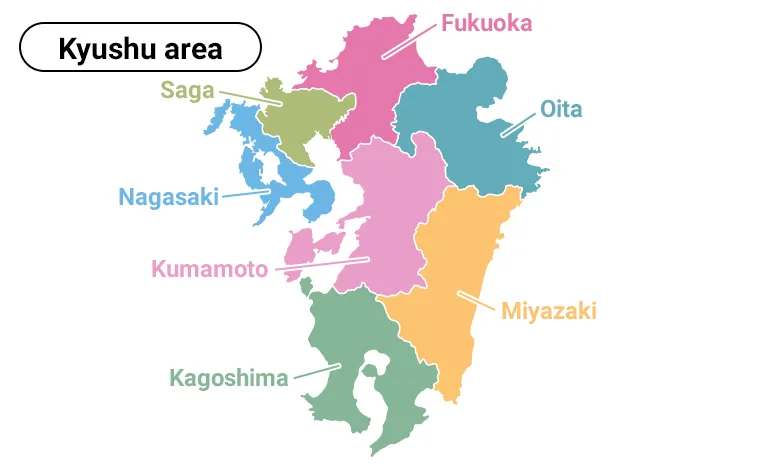
Fukuoka Prefecture (福岡県)
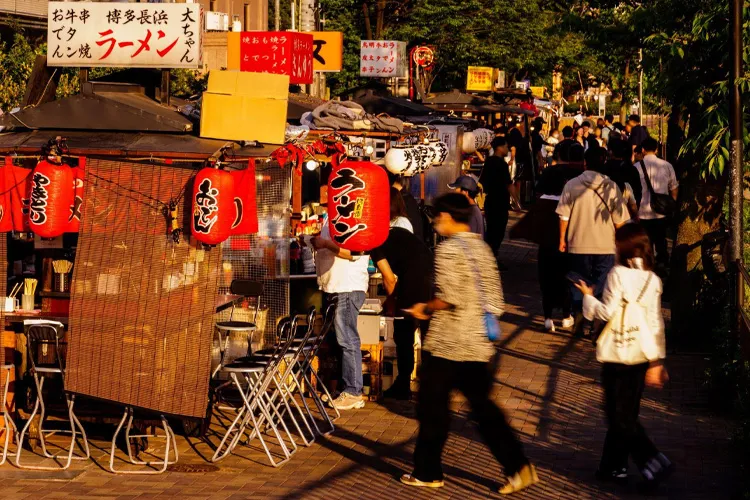
- Hakata (博多): The main transportation hub and a vibrant city.
- Dazaifu Tenmangu Shrine (太宰府天満宮): A beautiful and historically significant shrine dedicated to the god of scholarship, surrounded by plum trees and traditional shops.
- Canal City Hakata (キャナルシティ博多): A massive shopping and entertainment complex with canals, fountains, and diverse stores.
- Hakata Ramen: Famous for its rich, creamy tonkotsu (pork bone) broth. Try it at a local ramen shop or a "yatai" (food stall).
- Nakasu Kawabata (中洲川端): Lively entertainment district, especially known for its yatai food stalls along the river at night.
- Charm: A dynamic urban center blending modern amenities with rich history and an incredible food scene.
Nagasaki Prefecture (長崎県)
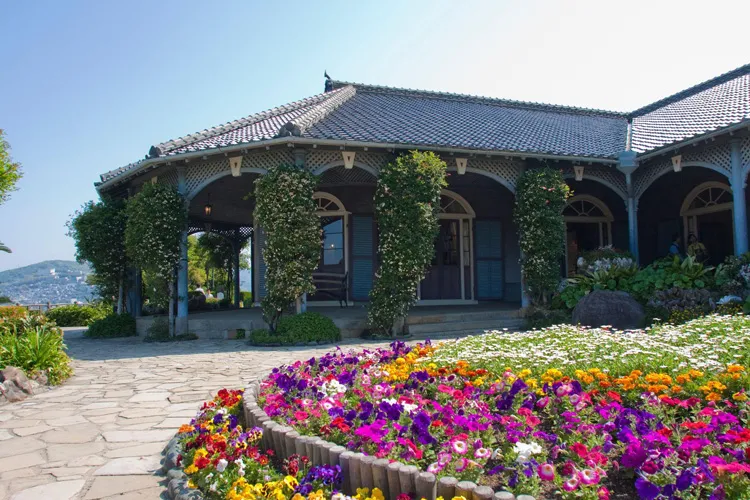
- Nagasaki City (長崎市): A city with a unique history shaped by its role as Japan's only open port during centuries of isolation.
- Peace Memorial Park & Atomic Bomb Museum (平和公園・原爆資料館): A solemn and essential visit for reflection on the atomic bombing and a powerful message of peace.
- Glover Garden (グラバー園): Beautiful outdoor museum featuring Western-style residences of former foreign merchants, offering panoramic views of the city and port.
- Dejima (出島): A fan-shaped artificial island that served as the sole trading post for Dutch and Chinese merchants during Japan's isolation period. Fully reconstructed, offering a glimpse into this unique history.
- Gunkanjima (Hashima Island - 軍艦島): A UNESCO World Heritage site, this abandoned island (resembling a battleship) was once a bustling coal mining town. Tours are available (weather permitting).
- Mount Inasa (稲佐山): Offers one of Japan's "new top three night views," accessible by ropeway.
- Charm: A city of profound history, vibrant international influence, and stunning nightscapes.
Kumamoto Prefecture (熊本県)
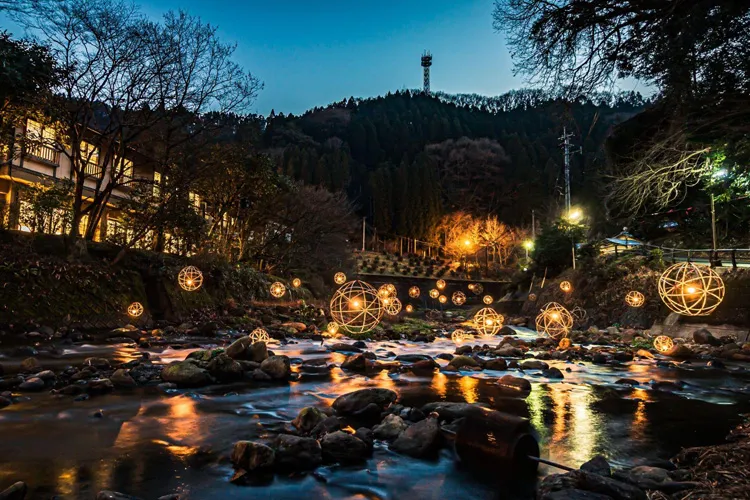
- Kumamoto City (熊本市):
- Kumamoto Castle (熊本城): One of Japan's most magnificent and historically significant castles, undergoing restoration after the 2016 earthquake (main keep is accessible, grounds open).
- Suizenji Jojuen Garden (水前寺成趣園): A beautiful traditional Japanese garden featuring a miniature representation of the Tokaido road, including Mount Fuji.
- Mount Aso (阿蘇山): One of the world's largest active calderas, offering dramatic volcanic landscapes, vast grasslands, and hiking opportunities.
- Kurokawa Onsen (黒川温泉): A highly popular and charming hot spring town nestled in a picturesque valley. Known for its traditional atmosphere and unique "onsen-hopping" pass.
- Charm: Majestic castles, vast volcanic landscapes, and serene, traditional onsen experiences.
Oita Prefecture (大分県)
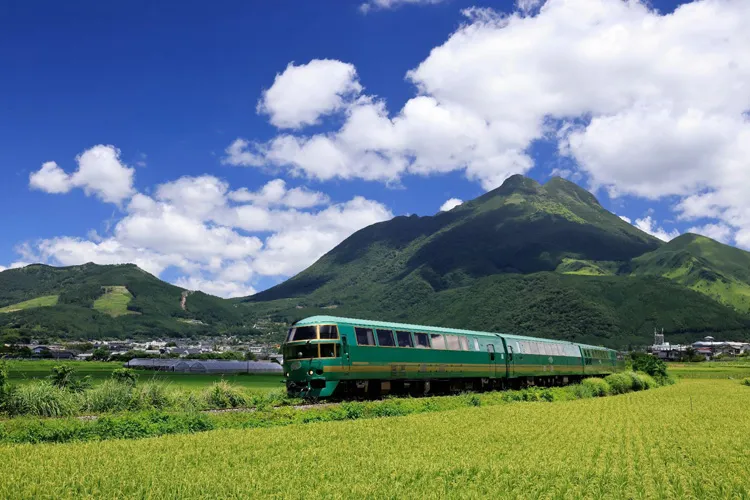
- Beppu (別府): Japan's most famous hot spring resort, renowned for its diverse onsen types and the unique "Hells of Beppu" (Jigoku Meguri), thermal hot springs for viewing, not bathing.
- Yufuin (由布院): A picturesque and tranquil onsen town nestled at the base of Mount Yufu. Known for its serene atmosphere, quaint shops, art museums, and Lake Kinrinko.
- Charm: The ultimate onsen experience, from the dramatic "Hells" to serene, idyllic townscapes.
Miyazaki Prefecture (宮崎県)
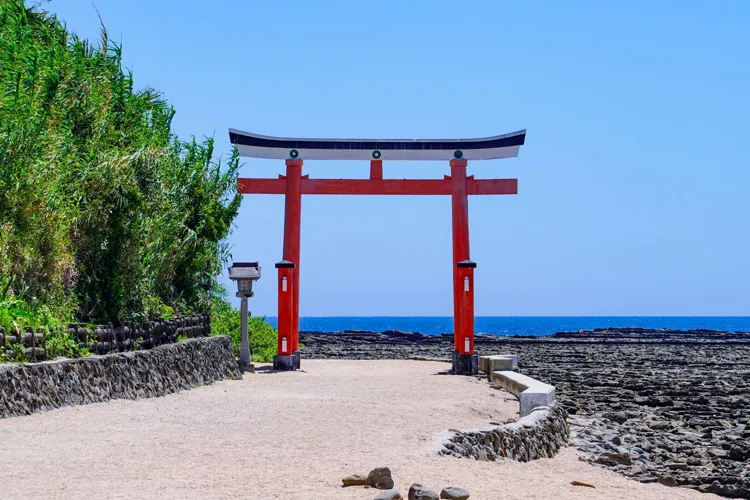
- Takachiho Gorge (高千穂峡): A stunning v-shaped gorge with dramatic columnar basalt cliffs, a beautiful waterfall (Manai Falls), and options for rowing boats. Linked to Japanese mythology.
- Aoshima Island (青島): A small, subtropical island famous for its unique geological formations known as "Devil's Washboard" (Oni no Sentakuita) and a colorful shrine.
- Udo Jingu Shrine (鵜戸神宮): A vibrant red shrine uniquely built into a cave on a coastal cliff, offering dramatic ocean views.
- Charm: A land of ancient myths, dramatic coastal scenery, and subtropical tranquility.
Kagoshima Prefecture (鹿児島県)
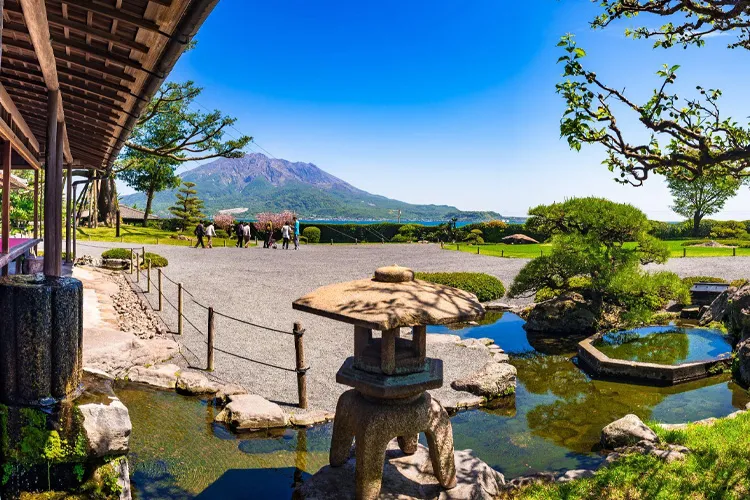
- Kagoshima City (鹿児島市): Nicknamed "Naples of the East" for its bay and active volcano backdrop.
- Sakurajima (桜島): An active volcano rising dramatically from Kagoshima Bay. Take a ferry to the island for observation points and foot baths.
- Sengan-en Garden (仙巌園): A beautiful traditional Japanese garden with Sakurajima and Kagoshima Bay as its "borrowed scenery." Offers insights into the Shimazu clan history.
- Ibusuki Onsen (指宿温泉): Famous for its unique "sand baths" (suna-mushi onsen), where you are buried in naturally heated volcanic sand on the beach.
- Yakushima Island (屋久島): A UNESCO World Heritage site, renowned for its ancient cedar forests (Jomon Sugi) and unique ecosystem. Requires dedicated time and is perfect for nature lovers and hikers.
- Charm: Dynamic volcanic landscapes, unique onsen experiences, and ancient natural wonders.
Saga Prefecture (佐賀県)
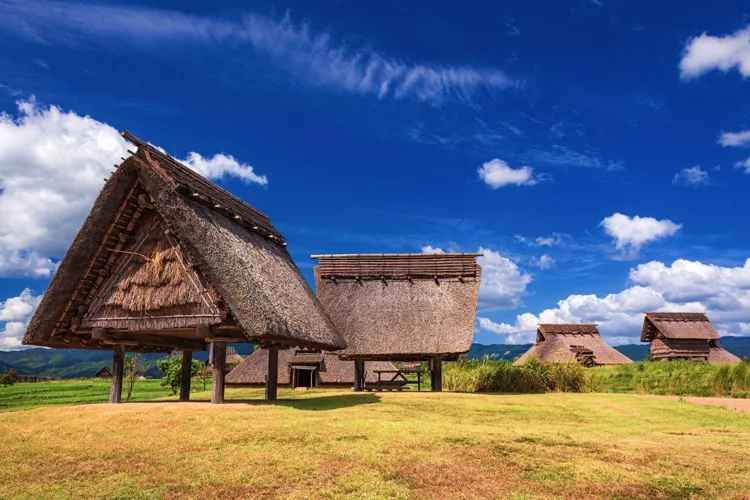
- Arita (有田): The birthplace of Japanese porcelain, famous for Arita-yaki ceramics. Explore the historic kilns, shops, and museums.
- Imari (伊万里): Another historic center for porcelain production, famous for Ko-Imari ware.
- Karatsu (唐津): A charming coastal town with a beautiful castle (Karatsu Castle) and famous for its Karatsu-yaki pottery and the lively Karatsu Kunchi festival.
- Yoshinogari Historical Park (吉野ヶ里歴史公園): One of Japan's most important archaeological sites, offering a vivid reconstruction of a large Yayoi Period (300 BC - 300 AD) village.
- Charm: A deep dive into Japan's traditional crafts, particularly world-renowned ceramics, and ancient history.
Find Your Perfect Kyushu Trip
Kyushu offers endless possibilities to suit every interest.
For Onsen Lovers (温泉巡り)
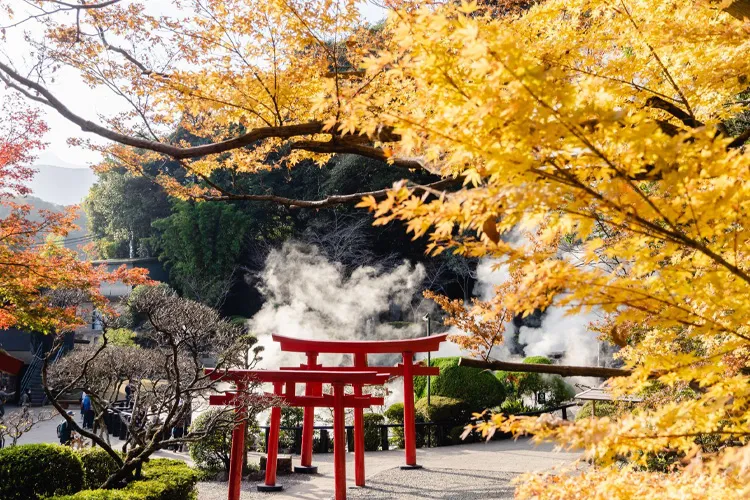
Kyushu is Japan's onsen paradise!
- Beppu: Experience the spectacle of the "Hells" and try various types of baths (mud, sand, steam).
- Yufuin: Enjoy a serene and scenic onsen retreat in a picturesque setting.
- Kurokawa Onsen: Wander through this traditional village and enjoy its unique onsen-hopping pass, allowing you to try multiple baths.
- Ibusuki: Indulge in the unique volcanic sand baths.
- Kirishima Onsen (Kagoshima): Enjoy hot springs amidst volcanic landscapes.
For History & Culture Buffs (歴史・文化)
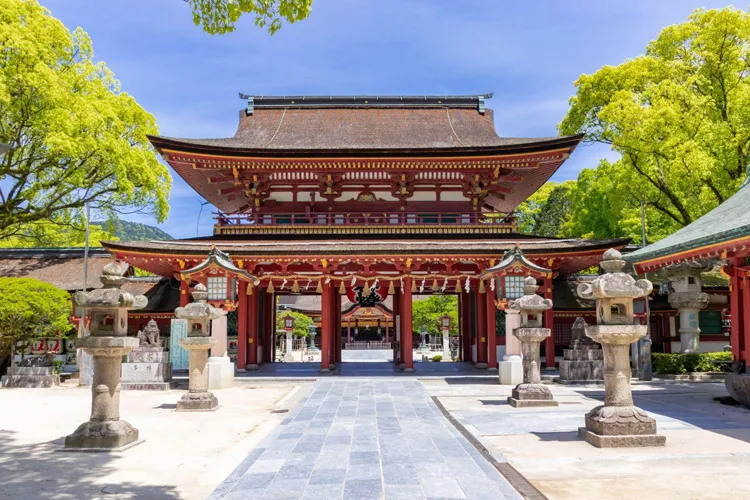
Delve into Kyushu's unique historical narrative:
- Nagasaki: Explore its complex history as a port for international exchange and a city of peace.
- Kumamoto Castle: Witness the enduring spirit of samurai architecture and resilience.
- Dazaifu Tenmangu Shrine: Immerse yourself in the spiritual and academic heritage.
- Arita/Imari: Discover the birthplace of Japanese porcelain and its lasting artistic legacy.
- Yoshinogari Historical Park: Step back thousands of years into ancient Japan.
For Nature & Adventure Seekers (自然・アウトドア)
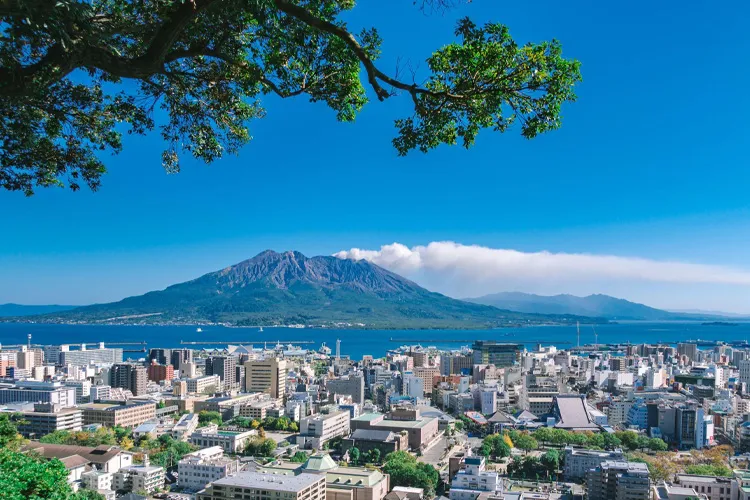
Embrace the island's diverse and dramatic natural landscapes:
- Mount Aso: Hike or drive through the vast caldera, witnessing active volcanic activity (from safe observation points).
- Takachiho Gorge: Enjoy a magical boat ride through the gorge.
- Yakushima: Trek through ancient cedar forests, a UNESCO World Heritage site, for a truly immersive nature experience.
- Sakurajima: Observe the active volcano from Kagoshima or take a ferry for closer views and unique geological features.
- Kirishima-Kinkowan National Park: Explore volcanic peaks, crater lakes, and rich biodiversity.
For Food Lovers (グルメ)
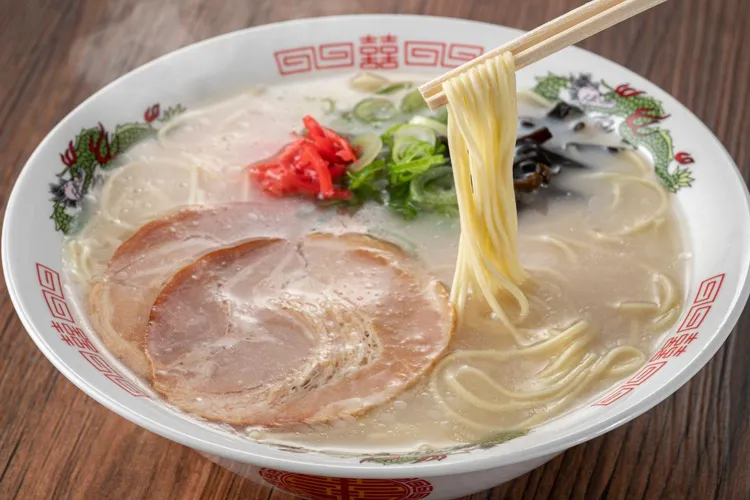
Savor Kyushu's rich and varied culinary traditions:
- Hakata Ramen (Fukuoka): The quintessential rich tonkotsu ramen.
- Motsunabe (Fukuoka): A hearty hot pot with offal and vegetables.
- Mizutaki (Fukuoka): A simple but delicious chicken hot pot.
- Kagoshima Kurobuta (Black Pork): Renowned for its tenderness and flavor, enjoyed as shabu-shabu or tonkatsu.
- Miyazaki Beef: High-quality wagyu beef from Miyazaki.
- Chicken Nanban (Miyazaki): Fried chicken with tartar sauce, a local favorite.
- Basashi (Kumamoto): Horse sashimi, a regional delicacy.
- Toriten (Oita): Fried chicken tempura, a local Oita specialty.
- Fresh Seafood: Enjoy the bounty of the surrounding seas across all coastal prefectures.
For Family Fun (家族向け)
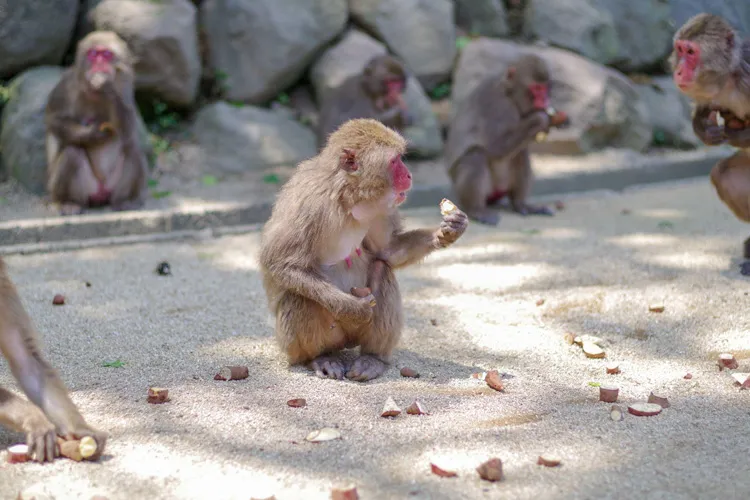
Kyushu offers many attractions for families with children:
- Marine World Uminonakamichi (Fukuoka): Large aquarium with a variety of marine life.
- Harmonyland (Oita): Sanrio-themed amusement park.
- Huis Ten Bosch (Nagasaki): A unique Dutch-themed park with seasonal events, illuminations, and various attractions.
- Kijima Kogen Park (Oita): Amusement park with roller coasters and other rides.
- Mount Takasaki Wild Monkey Park (Oita): Observe hundreds of wild monkeys in their natural habitat.
- Uminonakamichi Seaside Park (Fukuoka): Expansive park with playgrounds, flower gardens, and recreational areas.
Sample Itineraries
Need some inspiration? Here are a few suggested itineraries to help you plan your perfect Kyushu adventure.
Example 1: Northern Kyushu Highlights (6泊7日)
Ideal for first-timers covering major cities, history, and onsen.
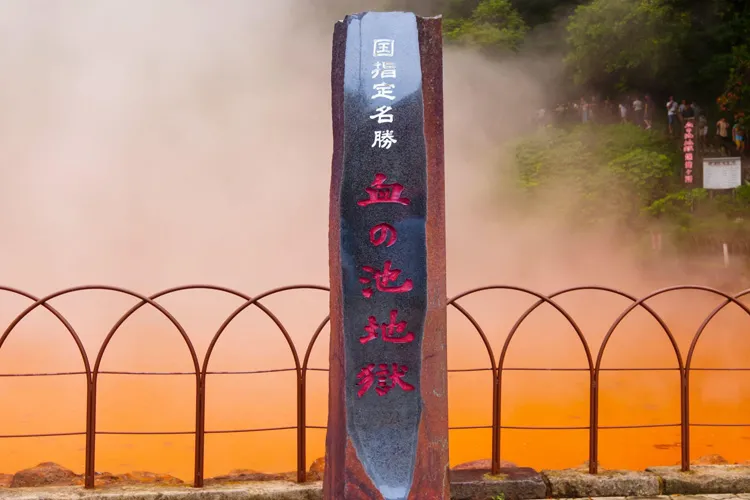
- Day 1 (Fukuoka): Arrive at Hakata Station (Fukuoka). Check into hotel. Explore Canal City Hakata and Tenjin for shopping. Evening: Enjoy Hakata Ramen at a yatai stall along Nakasu River. Overnight in Fukuoka.
- Day 2 (Fukuoka/Dazaifu): Morning: Visit Dazaifu Tenmangu Shrine. Afternoon: Explore more of Fukuoka (e.g., Ohori Park, Fukuoka Tower). Evening: Try Motsunabe or another local specialty. Overnight in Fukuoka.
- Day 3 (Nagasaki History): Travel to Nagasaki (JR Kamome Limited Express). Check into hotel. Afternoon: Visit Peace Memorial Park & Atomic Bomb Museum. Evening: Enjoy dinner with views of the port. Overnight in Nagasaki.
- Day 4 (Nagasaki Culture): Morning: Explore Glover Garden and Dejima. Afternoon: Take the ropeway up Mount Inasa for breathtaking night views. Overnight in Nagasaki.
- Day 5 (Kumamoto Castle & Onsen): Travel to Kumamoto (JR Shinkansen). Visit Kumamoto Castle and Suizenji Garden. Afternoon: Travel to Kurokawa Onsen (direct bus or train/local bus). Check into a traditional ryokan. Enjoy onsen hopping. Overnight in Kurokawa Onsen.
- Day 6 (Aso & Beppu/Yufuin): Morning: Explore Mount Aso's volcanic landscapes (rent a car or local bus tour). Afternoon: Travel to Beppu or Yufuin (bus from Aso/Kumamoto). Experience the Hells of Beppu or relax in Yufuin's tranquil atmosphere. Overnight in Beppu/Yufuin.
- Day 7: Morning: Enjoy last onsen or explore more. Depart from Oita Airport or return to Hakata for onward travel.
Example 2: Southern Kyushu Scenic & Spiritual Journey (7泊8日)
Focus: Nature, volcanoes, unique onsen, and spiritual sites.
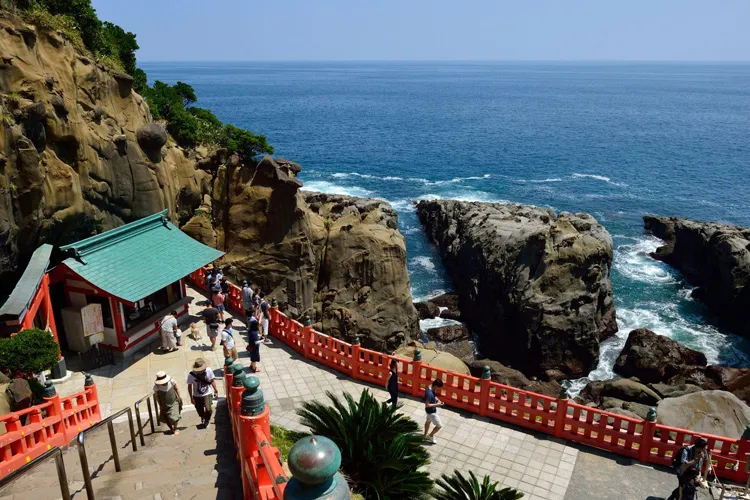
- Day 1 (Kagoshima): Arrive at Kagoshima Airport. Travel to Kagoshima City. Check into hotel. Explore Sengan-en Garden. Evening: Enjoy Kagoshima Kurobuta cuisine. Overnight in Kagoshima.
- Day 2 (Sakurajima & Ibusuki): Morning: Take the ferry to Sakurajima for observation points and foot baths. Afternoon: Travel to Ibusuki Onsen (JR Ibusuki Makurazaki Line). Indulge in the unique sand baths. Overnight in Ibusuki.
- Day 3 (Kirishima & Miyazaki): Morning: Travel to Kirishima for its volcanic landscapes and onsen. Afternoon: Travel to Miyazaki City. Check into hotel. Enjoy Chicken Nanban for dinner. Overnight in Miyazaki.
- Day 4 (Miyazaki Coastal): Explore Aoshima Island and Udo Jingu Shrine (rental car or local bus recommended for this area). Overnight in Miyazaki.
- Day 5 (Takachiho Mystique): Travel to Takachiho (bus from Miyazaki, or train/bus via Nobeoka). Explore Takachiho Gorge (boat ride) and visit Takachiho Shrine for a night Kagura performance (seasonal). Overnight in Takachiho.
- Day 6 (Aso Volcano): Travel from Takachiho to Mount Aso (bus or rental car). Explore the active volcano and vast grasslands. Overnight near Aso or in Kumamoto City.
- Day 7 (Kumamoto Castle & Departure): Morning: Visit Kumamoto Castle. Afternoon: Explore the city or enjoy last-minute shopping. Depart from Kumamoto Airport or Hakata for onward travel.
Example 3: Comprehensive Kyushu Grand Tour (10泊11日)
Combines the best of Northern and Southern Kyushu, ideal for longer trips.
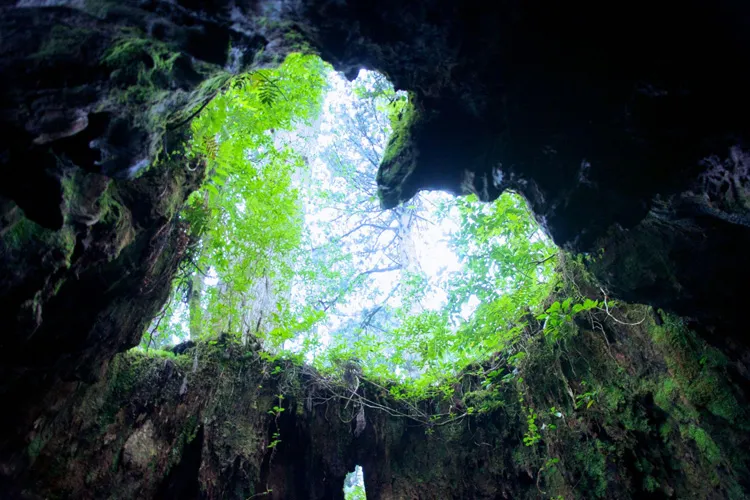
- Day 1-4: Follow "Northern Kyushu Highlights" for Days 1-4 (Fukuoka & Nagasaki).
- Day 5 (Kumamoto Castle & Aso): Travel to Kumamoto (JR Shinkansen). Visit Kumamoto Castle. Afternoon: Head towards Mount Aso (JR Hohi Line to Aso or rental car). Explore volcanic landscapes. Overnight near Aso.
- Day 6 (Kurokawa Onsen & Yufuin): Morning: Enjoy more of Mount Aso. Afternoon: Travel to Kurokawa Onsen for onsen hopping. Late afternoon: Continue to Yufuin (bus). Overnight in Yufuin.
- Day 7 (Beppu & Miyazaki): Morning: Relax in Yufuin. Afternoon: Travel to Beppu to experience the Hells of Beppu. Evening: Travel to Miyazaki City (JR Limited Express Sonic + Nippo Main Line). Overnight in Miyazaki.
- Day 8 (Miyazaki Myths & Coast): Explore Takachiho Gorge (day trip from Miyazaki or overnight in Takachiho). Alternatively, visit Aoshima Island and Udo Jingu Shrine. Overnight in Miyazaki.
- Day 9 (Kagoshima City): Travel to Kagoshima City (JR Nippo Main Line). Check into hotel. Visit Sakurajima via ferry and Sengan-en Garden. Evening: Enjoy local Kagoshima cuisine. Overnight in Kagoshima.
- Day 10 (Ibusuki or Yakushima): Day trip to Ibusuki Onsen for sand baths. OR, for nature enthusiasts, consider a flight/ferry to Yakushima Island (requires an extra 2-3 days minimum). If staying near Kagoshima, explore more of the city or nearby Kirishima. Overnight in Kagoshima.
- Day 11: Morning: Last-minute souvenir shopping. Depart from Kagoshima Airport or Hakata for onward travel.
Private Tours & Sightseeing Kyushu
Discover Kyushu Your Way: Private Tours & Personalized Sightseeing Experiences
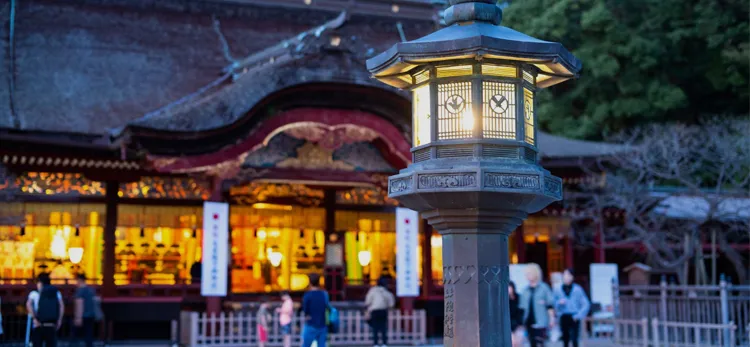
Fukuoka Private Tour (8 hours)
Dazaifu Tenmangu Shrine, shopping at Canal City, Fukuoka Tower
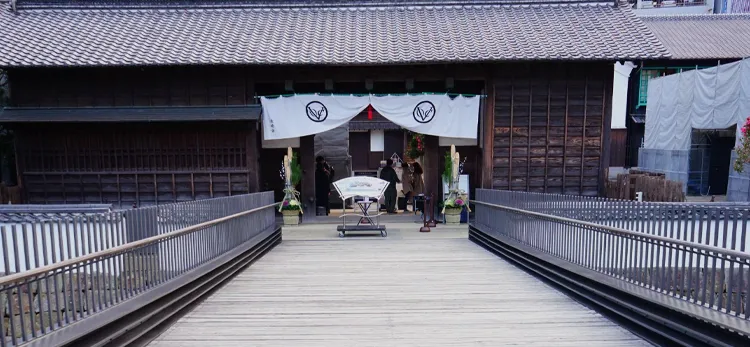
Nagasaki Private Tour (8 hours)
Nagasaki Peace Park, Dejima, China Town, Confucian Shrine, Glover Garden
Essential Travel Tips
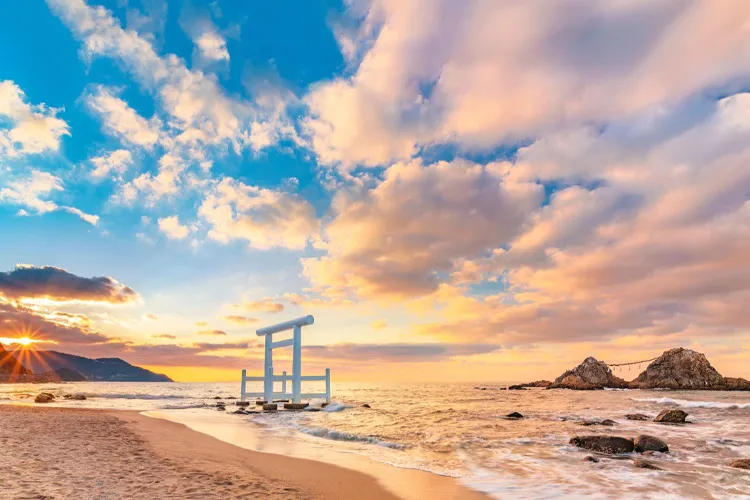
Make your trip to Kyushu smooth and enjoyable with these practical tips.
Transportation
- JR Kyushu Rail Pass: Highly recommended for unlimited train travel across Kyushu. Choose between North Kyushu, South Kyushu, or All Kyushu versions depending on your itinerary. Purchase before arriving in Japan.
- Rental Car: Ideal for flexibility, especially in rural areas like Aso, Takachiho, and exploring remote onsen towns. International Driving Permit is required.
- Highway Buses: A good alternative for direct connections between major cities and some popular onsen towns (e.g., Fukuoka to Beppu/Yufuin/Kurokawa).
- IC Cards: Use a regional IC card (like Sugoca or Nimoca in Fukuoka, or other compatible national IC cards) for seamless travel on local trains and subways.
Accommodation
Kyushu offers a wide range of accommodation:
- Onsen Ryokan: Essential for the ultimate Kyushu experience, offering traditional Japanese rooms, multi-course meals (kaiseki), and hot spring baths. Book well in advance.
- Hotels: Numerous options from luxury international chains to business hotels in major cities (Fukuoka, Kagoshima, Kumamoto, Nagasaki).
- Guesthouses & Hostels: Budget-friendly options are available in most tourist areas.
Connectivity
- Free Wi-Fi: Available at major train stations, many hotels, and some public areas.
- SIM Cards & Pocket Wi-Fi: Recommended for consistent internet access, especially in more rural areas.
Other Useful Information
- Comfortable Shoes: Essential for exploring cities, castle grounds, national parks, and onsen towns.
- Onsen Etiquette: Learn basic onsen etiquette before visiting (e.g., washing thoroughly before entering, tattoo policies).
- Cash is Useful: While major establishments accept credit cards, having some cash is useful for smaller shops, local eateries, some onsen, and rural areas.
- Volcanic Activity: If visiting active volcanic areas like Aso or Sakurajima, check the latest local alerts and follow safety guidelines. Access to certain areas may be restricted based on volcanic activity levels.
- Food Allergies/Dietary Restrictions: Learn basic Japanese phrases or use translation apps to communicate your needs at restaurants.
- Be Prepared for Warmth: Kyushu can get quite warm in summer; stay hydrated and use sun protection.
Kyushu Travel FAQ
- Which cities should I visit in Kyushu? What makes each one special?
- Here are some of the top destinations in Kyushu, each offering something unique:
- Fukuoka: A vibrant gateway city known for its street food stalls (yatai), tonkotsu ramen, modern shopping, and easy access to nature.
- Nagasaki: A city rich in international history, with sites like the Peace Park, Atomic Bomb Museum, and charming Glover Garden.
- Kumamoto: Home to the famous Kumamoto Castle and a great base for visiting Mount Aso, an active volcano surrounded by scenic landscapes.
- Beppu & Yufuin (Oita): Hot spring paradise! Beppu is famous for steam baths and “hell” hot springs, while Yufuin offers a more relaxed, artsy vibe.
- Kagoshima: Known for Sakurajima Volcano, relaxing onsen, and local dishes like black pork shabu-shabu.
- Miyazaki: A beautiful coastal area with power spots like Aoshima Shrine and lush ocean views. Also popular for surfing.
- Saga: A quieter destination famous for Arita porcelain, tea fields, and peaceful hot springs like Ureshino Onsen.
- What food is Kyushu famous for, and is it safe for foreigners to eat?
- Kyushu is a food lover’s paradise! Here are some must-try dishes that are generally safe and enjoyable for international travelers:
- Tonkotsu Ramen (Fukuoka): Rich pork-bone broth, creamy and flavorful—iconic and widely loved.
- Champon (Nagasaki): A noodle dish loaded with seafood and vegetables in a light broth.
- Karashi Renkon (Kumamoto): Lotus root stuffed with spicy mustard miso—an adventurous bite for the bold.
- Black Pork Shabu-Shabu (Kagoshima): Tender pork simmered in hot broth, often served with dipping sauces.
- Charcoal-Grilled Chicken (Miyazaki): Smoky, juicy local chicken grilled over high heat—great with beer!
- Onsen Steamed Dishes (Oita): Unique meals cooked using natural hot spring steam—healthy and fun to try.
- Is it safe to visit volcanoes like Mount Aso or Sakurajima?
- Yes, visiting volcanic areas in Kyushu is generally safe. Japan has strict safety monitoring, and tourists are only allowed in areas deemed safe by the authorities.
- Mount Aso: When activity levels are low, you can visit observation points and even see the crater from a distance.
- Sakurajima (Kagoshima): Still active, but safe to view from nearby areas. There are designated viewing spots and informative visitor centers.
- How much English is spoken in Kyushu?
- In major cities like Fukuoka, Nagasaki, and Kumamoto, you’ll find basic English support at hotels, tourist info centers, airports, and larger train stations.
In rural or less touristy areas, English may be limited—but don’t worry! People are friendly and willing to help, and apps like Google Translate or Papago can go a long way.
Travel tips:- Choose attractions with English signage or audio guides.
- Look for restaurants with photo menus.
- Learn a few simple Japanese phrases like "Arigato" (Thank you) or "Kore kudasai" (This one, please).
- How many days do I need to explore Kyushu?
- It depends on your travel pace and interests. Here's a quick guide:
- 3 days: Fukuoka + a day trip to Dazaifu, Nagasaki, or Beppu.
- 5 days: Visit 2–3 cities (e.g., Fukuoka, Nagasaki, Kumamoto) in western Kyushu.
- 7 days: A more complete route from Fukuoka to Kagoshima via train or car.
- 10+ days: Explore deeper areas like Miyazaki, Yakushima Island, or the Goto Islands.


